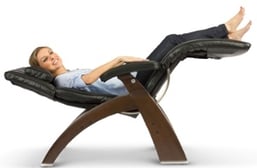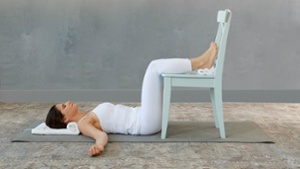 Most patients experience lasting relief after undergoing a discectomy to reduce leg pain (sciatica) caused by a lumbar herniated disc. While some patients can achieve great results with conservative, nonsurgical treatments, for others a discectomy is the best option to achieve a fast recovery and lasting relief from pain.
Most patients experience lasting relief after undergoing a discectomy to reduce leg pain (sciatica) caused by a lumbar herniated disc. While some patients can achieve great results with conservative, nonsurgical treatments, for others a discectomy is the best option to achieve a fast recovery and lasting relief from pain.
Although the procedure itself is very effective in most cases, the idea of recovery is often overwhelming for patients who are still considering lumbar herniated disc surgery. To ease any concerns you may have about lumbar herniated disc surgery, here is a breakdown of what you can expect during your recovery.
Herniated Disc Surgery and Recovery: What to Expect
During your lumbar herniated disc surgery, a spine surgeon will make a small skin incision, retract the muscles and remove any ruptured disc fragments to decompress the spinal nerve root. Then, immediately following your surgery, you’ll wake up in a post-operative recovery room, where nurses will monitor you while you recover from general anesthesia.
Nurses will take care of you and watch you carefully until you wake up, checking your vital signs often, looking at your dressings (bandages), regulating your intravenous fluids and giving you pain medication as needed. Most patients may begin moving around within a few hours of surgery, and go home on the same day or the next following their lumbar herniated disc surgery.
When you’re ready to go home, your spine surgeon will provide aftercare instructions for pain management and incision care. You can take pain medication as directed by your spine surgeon and ice your incision 3-4 times per day to reduce pain and inflammation while you recover. Recovery time for lumbar herniated disc surgery varies from one to four weeks based on the extent of a patient’s lumbar disc herniation, the patient’s overall health, and the patient's compliance with post-surgical instructions.
Most patients return to work within 2-4 weeks following surgery; however, those with more strenuous jobs may need to wait up to 12 weeks before returning. Your physician will discuss this with you, as well as any other activity restrictions, during your post-surgical office visit.
Activities After Surgery: What Should You (and Shouldn’t You) Do?
After herniated disc surgery, it’s important to follow any activity restrictions and aftercare instructions to support your recovery and reduce risk of reherniation. Here are some of the common precautions advised by spine surgeons:
Daily activities
Immediately following lumbar herniated disc surgery, you’ll likely need help with many of your daily activities. Plan for a family member or friend to assist you after your discectomy to support proper healing. You should not drive or drink alcoholic beverages for approximately two weeks after herniated disc surgery.
Appropriate exercise
At first, you should only walk for 5-10 minutes every few hours after your lumbar herniated disc surgery. You can then gradually increase your activity levels based on the level of pain you’re experiencing and post-op instructions provided by your surgeon.
After the first few weeks of your recovery, you can maintain a healthy level of exercise and stretching to prevent muscles from becoming tense and stiff with inactivity. Avoid high-impact exercises like jogging and aerobics that put a lot of pressure on the spine. Low-impact exercises, such as yoga and similar stretching programs, can help loosen muscles and aid in your recovery process. In general, walking is one of the best exercises during the first weeks after surgery.
Proper lifting techniques
No bending, lifting, or twisting whatsoever should be attempted for two weeks after your discectomy surgery, because this can hinder your recovery and increase your risk of reherniation. While you’re still healing, avoid lifting anything heavier than five pounds for two weeks after lumbar herniated disc surgery. Even after two weeks, when lifting anything—not only during weight training—you should avoid bending at the waist and/or rounding your back. Instead, always bend at the knees, with your back straight, to take pressure off of your spine and reduce the risk of injury. During all activities, any increase of low back pain or leg pain is a warning sign to you that you have done too much. So listen to your body.
Relaxation techniques
Throughout your recovery process, you should maintain a healthy balance of exercise and relaxation. Many find the “psoas” position helps maintain good posture while sitting. A “Zero Gravity” chair can also help you achieve the psoas position with ease, taking pressure off your spine.


Example of a zero gravity chair Example of a "psoas" position
Smoking cessation
Smoking can delay healing, impede the recovery process, and inhibit bone growth. Besides wound healing and bone growth disturbances, smoking has a negative influence on disc degeneration. Stop or reduce your tobacco use to increase the likelihood of a full recovery and positive outcome after lumbar herniated disc surgery.
Looking Ahead: After Your Discectomy Recovery Is Complete
Lumbar herniated disc surgery may seem daunting, but hopefully within a few months following your discectomy, you’ll be living an active, pain-free life. With that said, it’s important to do what you can to minimize the risk of reherniation and repeat surgery after your lumbar discectomy.
For some, the risk of reherniation is higher than for others. Patients with large holes in their disc have 2.5 times the risk of reherniation1 and 2.3 times the risk of reoperation2 compared to those without large holes. If your doctor does find that you have a large hole (6mm or larger) in your disc and therefore have a greater risk of reherniation, you may benefit from implantation of the Barricaid device during your lumbar herniated disc surgery.
The Barricaid device is specifically designed to improve discectomy outcomes for patients with large holes in their disc. Research shows the risk of symptomatic reherniation and reoperation are approximately 50 percent lower3 in patients with large holes who are treated with lumbar discectomy and the Barricaid device.
The implant allows your surgeon to perform a less aggressive discectomy, ultimately preserving as much of the disc as possible and reducing your risk of reherniation. The expected recovery and extent of the activity restrictions following Barricaid surgery is no different than those after a standard discectomy procedure. If anything, by minimizing your reherniation and reoperation risk, you’re also minimizing the potential need for a second (or third) recovery period.
Lumbar herniated discs are never fun—but they don’t have to define our lives. In the hands of an experienced, skilled spine surgeon, you can get rid of painful symptoms and get back to living life the way you want to: active and pain-free.
While this blog is meant to provide you with information you need to make an informed decision about your treatment options, it is not intended to replace professional medical care or provide medical advice. If you have any questions about the Barricaid, please call or see your doctor, who is the only one qualified to diagnose and treat your spinal condition. As with any surgical procedure, you should select a doctor who is experienced in performing the specific surgery that you are considering.
If you have any questions about Barricaid, you may ask your doctor. For additional information, please visit www.barricaid.com. For complete risk-benefit information: www.barricaid.com/instructions-for-use.
References
1 Larry E. Miller et al, “Association of Annular Defect Width After Lumbar Discectomy With Risk of Symptom Recurrence and Reoperation: Systematic Review and Meta
Analysis of Comparative Studies,” Spine 43, no. 5 (2018): E308-E315, doi: 10.1097/BRS.0000000000002501.
2 Ibid.
3 Larry E. Miller et al, “Expert Review with Meta-Analysis of Randomized and Nonrandomized Controlled Studies of Barricaid Annular Closure in Patients at High Risk for Lumbar Disc Reherniation,” Expert Rev Med Devices 17, no. 5 (2020): 461-469, doi: 10.1080/17434440.2020.1745061.


![[You may be able to decrease your chance of a repeat herniation after your first discectomy by 50%. Take this quiz to find out.]](https://no-cache.hubspot.com/cta/default/7330018/10ff7b73-96e0-4fa7-919b-f4b5430bd91b.png)

Comments